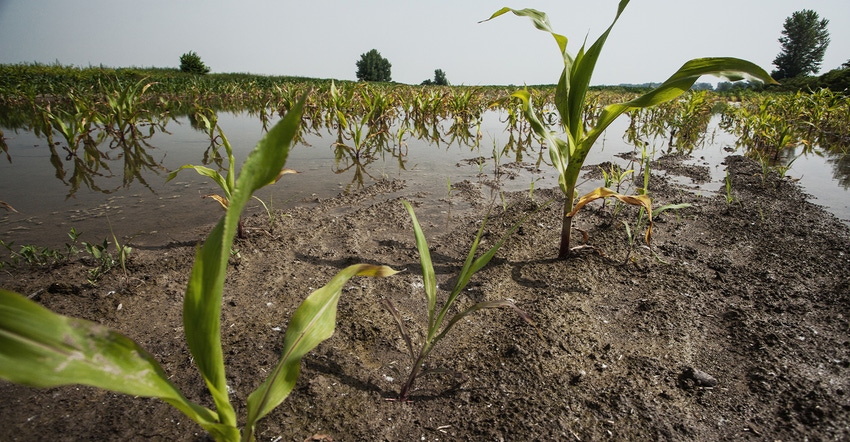
Due to the heavy rains and flooding that occurred in parts of the U.S. during the first two weeks of June, USDA’s National Agricultural Statistics Service will collect updated information this month on acres planted to corn, cotton, sorghum, and soybeans in 14 states.
NASS previously collected planted acreage information during the first two weeks of June, with the results published in the June 28 Acreage report. Given the weather, farmers posting on social media expressed doubts about the accuracy of those numbers.
Excessive rainfall had prevented planting at the time of the survey, leaving a portion of acres still to be planted for corn in Illinois, Indiana, Iowa, Kansas, Michigan, Minnesota, Missouri, Nebraska, New York, North Dakota, Ohio, South Dakota and Wisconsin; soybeans in Arkansas, Illinois, Indiana, Iowa, Kansas, Michigan, Minnesota, Missouri, Nebraska, New York, North Dakota, Ohio, South Dakota and Wisconsin; cotton in Arkansas; and sorghum in Kansas.
If the newly collected data justify any changes, NASS will publish updated acreage estimates in the Crop Production report to be released Aug. 12. It will be available online at nass.usda.gov/publications.
Dan Lofthus, state statistician with the USDA-NASS Upper Midwest Region, Minnesota Field Office, says NASS works to gather reliable data. Minnesota farmers were surveyed between May 30 and June 16, he says.
“All reported data is reviewed for consistency in all of our surveys,” Lofthus says. “If we locate data that might be considered an outlier, we work hard to verify it with the farmer who reported it before the survey project is concluded.”
About the Author(s)
You May Also Like






